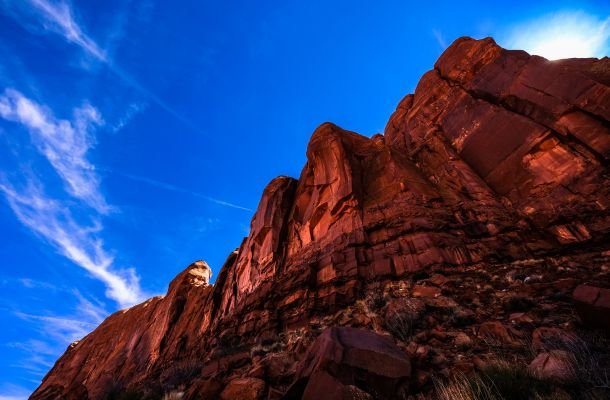Geology of Columbia, SC

Introduction
Columbia, the capital city of South Carolina, is not just a political and cultural hub; it also sits at the crossroads of several significant geological features. The city’s geology offers a fascinating glimpse into the earth’s history, spanning millions of years and influencing the landscape, natural resources, and development of the region. This guide will delve deep into the geological characteristics of Columbia, SC, exploring its rock formations, mineral resources, and the processes that have shaped its terrain.
Geological Overview of Columbia, SC
Columbia is located at the Fall Line, a geological boundary that separates the Piedmont Plateau from the Atlantic Coastal Plain. This division marks a dramatic change in the landscape, where the rolling hills of the Piedmont give way to the flat, sandy terrain of the Coastal Plain. The city’s unique position along this line has significant implications for its geology and natural history.
The Fall Line: A Natural Boundary
The Fall Line is a critical geological feature that runs through Columbia. It represents the point where rivers descending from the harder, more resistant rocks of the Piedmont Plateau encounter the softer sediments of the Coastal Plain. This transition results in a series of rapids and waterfalls, which historically made the Fall Line a natural barrier to navigation and a prime location for water-powered mills and settlements.
Significance of the Fall Line in Columbia
- Economic Development: The Fall Line was instrumental in the early economic development of Columbia. The presence of waterfalls provided a reliable source of power for mills, which were crucial to the city’s growth in the 18th and 19th centuries.
- Water Resources: The convergence of rivers at the Fall Line, including the Broad, Saluda, and Congaree Rivers, has created a rich network of waterways that are vital to Columbia’s water supply and ecological health.
- Geological Transition: The Fall Line marks a significant change in rock types, from the crystalline rocks of the Piedmont to the sedimentary formations of the Coastal Plain. This transition has influenced soil types, vegetation, and land use in the region.
The Piedmont Plateau
The Piedmont Plateau is characterized by rolling hills, composed primarily of ancient metamorphic and igneous rocks. These rocks, which include granite, gneiss, and schist, are some of the oldest in the state, dating back to the Precambrian and early Paleozoic eras.
Rock Formations in the Piedmont
- Granite and Gneiss: These are the most common rock types found in the Piedmont region of Columbia. Granite, known for its durability and strength, has been used extensively in construction and monument building. Gneiss, a banded metamorphic rock, is also prevalent and shares many characteristics with granite.
- Metamorphic Processes: The rocks of the Piedmont have undergone significant metamorphism, a process in which existing rocks are transformed by heat, pressure, and chemically active fluids. This process has given rise to the complex and varied rock types found in the region.
- Soil Composition: The weathering of these metamorphic rocks has produced clay-rich soils, which are typical of the Piedmont. These soils are generally well-drained and support a variety of vegetation, including hardwood forests.
The Atlantic Coastal Plain
To the southeast of Columbia lies the Atlantic Coastal Plain, a region of flat, low-lying terrain composed of younger sedimentary rocks and unconsolidated sediments. The Coastal Plain is divided into the Inner Coastal Plain, which lies closer to the Fall Line, and the Outer Coastal Plain, which extends towards the coast.
Sedimentary Rocks of the Coastal Plain
- Sandstone and Limestone: The Coastal Plain is dominated by sedimentary rocks, particularly sandstone and limestone. These rocks were deposited during the Mesozoic and Cenozoic eras, when the area was covered by shallow seas. Limestone, in particular, is important as it forms the bedrock in many parts of the Coastal Plain and serves as a significant aquifer.
- Marine Deposits: The Coastal Plain’s sedimentary layers contain abundant marine fossils, providing evidence of the region’s ancient marine environments. These fossils include the remains of mollusks, corals, and other sea creatures that lived millions of years ago.
- Soil Characteristics: Soils in the Coastal Plain are generally sandy and acidic, with poor water retention. These soils support a different type of vegetation compared to the Piedmont, including pine forests and coastal scrub.
Geological History of Columbia, SC
The geology of Columbia has been shaped by a complex history of tectonic activity, sedimentation, and erosion, spanning hundreds of millions of years. Understanding this history is key to appreciating the region’s diverse geological features.
Precambrian and Paleozoic Eras: The Formation of the Piedmont
The oldest rocks in the Columbia area date back to the Precambrian era, more than 600 million years ago. During this time, the area that is now the Piedmont was part of a much larger landmass known as Rodinia, a supercontinent that predates Pangea.
- Tectonic Activity: The Precambrian and early Paleozoic eras were marked by significant tectonic activity, including the collision of ancient landmasses. These collisions led to the formation of mountain ranges and the metamorphism of existing rocks.
- Metamorphic Rocks: The intense heat and pressure from these tectonic events transformed the region’s original sedimentary and igneous rocks into the metamorphic rocks we see today, such as gneiss and schist.
- Erosion and Uplift: Over millions of years, the mountains formed during these tectonic events were gradually eroded, leaving behind the rolling hills of the Piedmont. This process also contributed to the development of the region’s rich, clayey soils.
Mesozoic Era: The Development of the Coastal Plain
During the Mesozoic era, approximately 250 to 65 million years ago, the region that is now Columbia was part of a vast coastal plain that extended across much of the southeastern United States.
- Sea Level Changes: Throughout the Mesozoic, fluctuations in sea level caused the coastline to advance and retreat multiple times. These changes led to the deposition of various sedimentary layers, including sandstones, shales, and limestones.
- Marine Environments: The Coastal Plain was frequently submerged under shallow seas, leading to the accumulation of marine sediments. These sediments eventually lithified into the sedimentary rocks that dominate the Coastal Plain today.
- Fossil Record: The sedimentary rocks of the Coastal Plain contain a rich fossil record, providing valuable insights into the marine life that once inhabited the region. Fossils of ancient mollusks, corals, and even sharks’ teeth have been found in these deposits.
Cenozoic Era: Erosion and Modern Landscape Formation
The Cenozoic era, which began about 65 million years ago and continues to the present day, has been a period of significant erosion and landscape development in the Columbia region.
- Erosion of the Piedmont: The Cenozoic era has seen the continued erosion of the Piedmont Plateau, with rivers and streams carving out valleys and shaping the rolling hills of the region.
- Sedimentation in the Coastal Plain: Erosion of the Piedmont has contributed to the deposition of sediments in the Coastal Plain, where they have been carried by rivers and streams. These sediments have further shaped the landscape, creating the flat, low-lying terrain characteristic of the Coastal Plain.
- Modern Rivers and Floodplains: The rivers that converge in Columbia, including the Congaree, Broad, and Saluda Rivers, have played a significant role in shaping the modern landscape. These rivers have created extensive floodplains and wetlands, which are important ecological and hydrological features of the region.
Natural Resources and Economic Geology
Columbia’s geology has provided the region with a variety of natural resources that have been important to its economic development. From mineral resources to fertile soils, the area’s geology has played a key role in shaping its economy and way of life.
Mineral Resources
While Columbia is not known for large-scale mineral mining, the region does have several mineral resources that have been historically significant.
- Granite Quarrying: The Piedmont region around Columbia is rich in granite, which has been quarried for use in construction and monument building. Columbia granite is known for its durability and aesthetic appeal, and it has been used in many important buildings and monuments throughout the southeastern United States.
- Sand and Gravel: The Coastal Plain’s sedimentary deposits include extensive sand and gravel resources, which are used in construction and road building. These materials are extracted from river beds and floodplains, where they have been naturally deposited over millions of years.
- Clay: The clay-rich soils of the Piedmont have been used for brick-making and pottery for centuries. The region’s clay deposits are a result of the weathering of metamorphic rocks, which break down into fine-grained minerals that are ideal for ceramic production.
Water Resources
Columbia’s position at the Fall Line, where several major rivers converge, has endowed the region with abundant water resources.
- Aquifers: The Coastal Plain’s limestone and sandstone formations act as natural aquifers, storing vast amounts of groundwater. These aquifers are a critical source of drinking water for Columbia and the surrounding areas.
- Rivers and Reservoirs: The Congaree, Broad, and Saluda Rivers are not only important for their ecological value but also serve as key water sources for the city. Reservoirs created by dams on these rivers, such as Lake Murray, provide water for drinking, irrigation, and industrial use.
- Floodplains and Wetlands: The floodplains and wetlands along the rivers play a vital role in water management, acting as natural buffers during periods of heavy rain and helping to filter pollutants from the water.
Soil and Agriculture
The diverse geology of Columbia has given rise to a variety of soil types, each with its own agricultural potential.
- Piedmont Soils: The clay-rich soils of the Piedmont are well-suited for growing crops like cotton, tobacco, and soybeans. These soils are fertile and retain moisture well, making them ideal for agriculture.
- Coastal Plain Soils: The sandy soils of the Coastal Plain are less fertile than those of the Piedmont but are still used for agriculture. These soils are well-drained and support crops like peanuts, corn, and pine trees.
- Alluvial Soils: The floodplains along the rivers contain rich alluvial soils, which are some of the most fertile in the region. These soils are deposited by the rivers during floods and are excellent for growing a wide range of crops.
Geological Landmarks in Columbia, SC
Columbia is home to several geological landmarks that offer insight into the region’s natural history and provide opportunities for education and recreation.
Congaree National Park
Congaree National Park, located just south of Columbia, is a prime example of the region’s geological diversity. The park is home to the largest intact expanse of old-growth bottomland hardwood forest in the southeastern United States.
- Floodplain Ecosystem: The park’s floodplain is shaped by the Congaree River, which periodically overflows its banks, depositing rich alluvial soils and supporting a diverse array of plant and animal life.
- Champion Trees: Congaree National Park is famous for its champion trees, some of the tallest and oldest in the eastern United States. These trees thrive in the park’s unique floodplain ecosystem, which is directly influenced by the region’s geology.
- Geological Trails: The park features several trails that highlight the geological features of the area, including the bluffs along the Congaree River, where visitors can see the transition from the Piedmont to the Coastal Plain.
Riverbanks Zoo and Garden
Riverbanks Zoo and Garden, located along the banks of the Saluda River, is another significant geological site in Columbia.
- Saluda River Gorge: The zoo is situated in a gorge carved by the Saluda River, where visitors can observe exposed rock formations that provide a glimpse into the region’s geological past.
- Botanical Garden: The Riverbanks Botanical Garden showcases a variety of plants that thrive in the different soil types found in the Columbia area, from the clay-rich soils of the Piedmont to the sandy soils of the Coastal Plain.
- Educational Exhibits: The zoo offers educational exhibits that explain the geology of the region, including the role of the Fall Line in shaping the local landscape.
Sesquicentennial State Park
Sesquicentennial State Park, located northeast of Columbia, is another area where visitors can explore the region’s geology.
- Piedmont Soils: The park is located in the Piedmont region, and its landscape is characterized by rolling hills and clay-rich soils. The park’s trails offer opportunities to observe the effects of erosion and weathering on the landscape.
- Pine Forests: The park’s pine forests are typical of the Piedmont, where the soil composition and topography favor the growth of pine trees. These forests are a direct result of the region’s geological history.
Human Impact on Columbia’s Geology
The geology of Columbia has not only shaped the natural landscape but has also been significantly impacted by human activity. Urban development, agriculture, and industrial activities have all left their mark on the region’s geology.
Urban Development and Land Use
Columbia’s growth as a city has led to significant changes in the local geology.
- Soil Erosion: Urban development, including the construction of roads and buildings, has increased soil erosion in the region. The removal of vegetation and the alteration of natural water flow have accelerated the erosion of the Piedmont’s clay-rich soils.
- Groundwater Depletion: The expansion of the city has also put pressure on the region’s groundwater resources. Increased demand for water has led to the over-extraction of groundwater from the Coastal Plain aquifers, resulting in lower water tables and the potential for land subsidence.
- Pollution: Industrial activities in Columbia have contributed to the pollution of the region’s soils and water resources. Contaminants from factories, agricultural runoff, and urban stormwater have all impacted the geological environment.
Conservation and Restoration Efforts
In response to the challenges posed by human activity, efforts have been made to conserve and restore Columbia’s natural geology.
- Soil Conservation: Programs aimed at reducing soil erosion have been implemented in the region. These include reforestation efforts, the use of cover crops in agriculture, and the construction of terraces and other erosion control structures.
- Water Resource Management: Conservation initiatives have also focused on protecting Columbia’s water resources. Measures such as water-efficient landscaping, the use of rain barrels, and the protection of wetlands and floodplains have been promoted to ensure the sustainable use of water.
- Environmental Education: Education programs in Columbia have been developed to raise awareness of the region’s geological heritage. These programs encourage residents and visitors to appreciate and protect the unique geological features of the area.
Conclusion
The geology of Columbia, SC, is a complex and fascinating subject that reflects the region’s long and varied natural history. From the ancient metamorphic rocks of the Piedmont to the younger sedimentary layers of the Coastal Plain, Columbia’s geological features have shaped the landscape, influenced human activity, and continue to play a vital role in the city’s development. Understanding the geology of Columbia provides valuable insights into the natural world and highlights the importance of conservation efforts to preserve this unique environment for future generations.
Find us
Tuesday
Wednesday
Thursday
Friday
Saturday
Sunday
10 am – 10 am
10 am – 10 am
10 am – 10 am
10 am – 10 am
10 am – 10 am
10 am – 10 am






